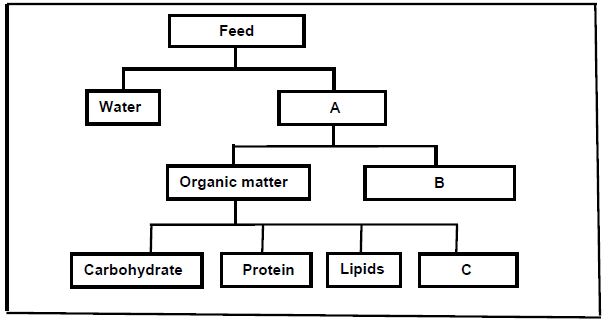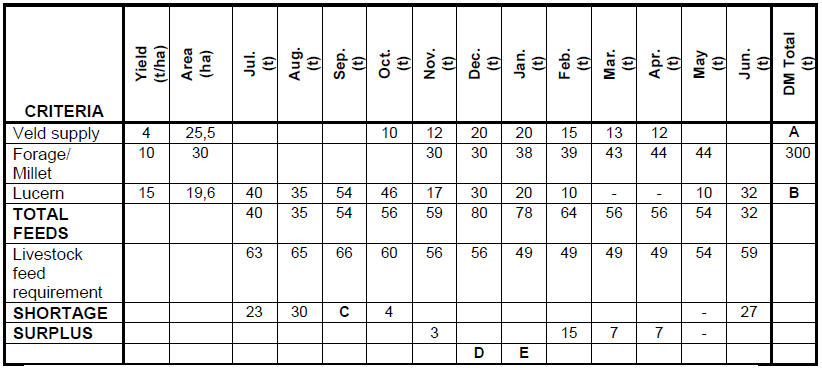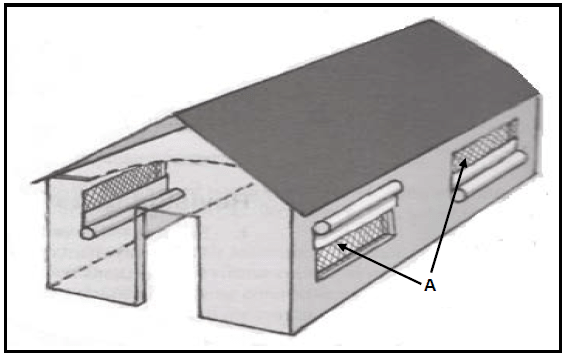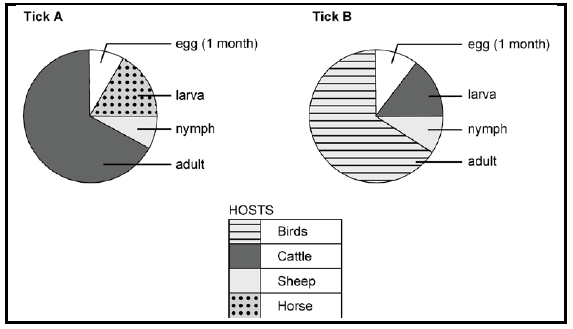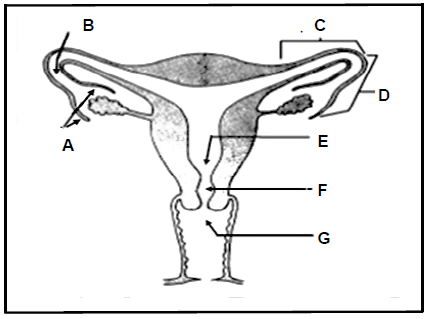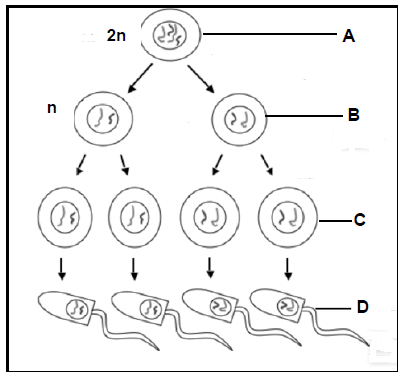AGRICULTURAL SCIENCES P1 Past Paper FEBRUARY/MARCH 2016 - GRADE 12 NATIONAL SENIOR CERTIFICATE
Share via Whatsapp Join our WhatsApp Group Join our Telegram GroupAGRICULTURAL SCIENCES P1
FEBRUARY/MARCH 2016
MARKS: 150
TIME: 2½ hours
INSTRUCTIONS AND INFORMATION
- This question paper consists of TWO sections, namely SECTION A and SECTION B.
- Answer ALL the questions in the ANSWER BOOK.
- Start EACH question on a NEW page.
- Number the answers correctly according to the numbering system used in this question paper.
- You may use a non-programmable calculator.
- Show all your calculations, including formulae, where applicable.
- Write neatly and legibly.
SECTION A
QUESTION 1
1.1 Various options are provided as possible answers to the following questions. Choose the answer and write only the letter (A–D) next to the question number (1.1.1–1.1.10) in the ANSWER BOOK, for example 1.1.11 A.
1.1.1 The biological value (BV) of protein is an index of the protein quality, which is dependent on the ...
- nutritive ratio and amino acid content.
- amino acid content and the ration in which it occurs.
- amino acid content and the softness of the protein.
- content of non-essential and essential amino acids.
1.1.2 Papillae in the wall of the rumen serve as ...
- heating rods for fermentation of crude fibre.
- Cooling rods for the synthesis of vitamins.
- rods which secrete cellulase to hydrolyse crude fibre.
- grinding rods and the drying of feed.
1.1.3 A deficiency of this mineral causes pica in farm animals:
- Cobalt
- Zinc
- Calcium
- Phosphorus
1.1.4 The process of alternating contractions and relaxations of the muscles that push food through the alimentary canal:
- Eructation
- Regurgitation
- Peristalsis
- Bloating
1.1.5 Which of the following will mostly be used in indigenous farming?
- Walls built by stacking stones
- Movable electrical fencing
- Wire fence dividing grazing areas
- Kraal made up of sticks
Choose the CORRECT combination:
- (i) and (ii)
- (ii) and (iv)
- (i) and (iv)
- (i) and (iii)
1.1.6 The best method to handle pigs:
- Make yourself known quietly and gently to avoid startling the animals.
- Throw cold water at them when waking the animals up.
- Guide the animals with a plywood board.
- Move them from darker to lighter areas with no shadow.
Choose the CORRECT combination:
- (ii), (iii) and (iv)
- (i), (ii) and (iii)
- (i), (iii) and (iv)
- (ii), (iii) and (iv)
1.1.7 The following applies to Newcastle disease:
- A viral disease
- Affects poultry of all ages
- Leads to heart and kidney failure
- No treatment for infected animals
Choose the CORRECT combination:
- (i) and (ii)
- (i), (ii) and (iv)
- (ii), (iii) and (iv)
- All the above-mentioned
1.1.8 The foetus is surrounded by three layers while attached to the uterus. What is the correct sequence of the layers from the inner to the outer layer?
- Amnion, allantois and chorion
- Chorion, amnion and allantois
- Allantois, chorion and amnion
- Amnion, chorion and allantois
1.1.9 WHICH ONE of the statements below with regard to the normal lactation of dairy cows is INCORRECT?
- When the milk yield is at its highest, butterfat is at its lowest.
- The higher the crude fibre content in a feed, the higher the butterfat content.
- Milk production drops before drying up.
- Feed with a lower fibre content produces milk with a low butterfat content.
1.1.10 The average length of the oestrus period of a cow is ... hours.
- 24
- 8
- 12
- 18
(10 x 2) (20)
1.2 Indicate whether each of the descriptions in COLUMN B applies to A ONLY, B ONLY, BOTH A AND B or NONE of the items in COLUMN A. Write A only, B only, both A and B or none next to the question number (1.2.1–1.2.5) in the ANSWER BOOK, for example 1.2.6 B only.
| COLUMN A | COLUMN B | ||
| 1.2.1 | A: | Oatmeal | Contains a small percentage of total digestible nutrients and a high crude fibre content |
| B: | Oats straw | ||
| 1.2.2 | A | Halter | Animal handling equipment |
| B | Electric prodder | ||
| 1.2.3 | A | Foot bath | The tick control method where an animal is completely immersed in a dipping tank |
| B | Spray dip | ||
| 1.2.4 | A | Embryo transfer | The aim of this process is to improve and preserve the genetic potential of the herd |
| B | Nuclear transfer | ||
| 1.2.5 | A | Cryptorchidism | One of or both the testes do not descend into the scrotum and remain in the abdominal cavity |
| B | Hypoplasia | ||
(5 x 2) (10)
1.3 Give ONE word/term for each of the following descriptions. Write only the word/term next to the question number (1.3.1–1.3.5) in the ANSWER BOOK.
1.3.1 A fat-soluble vitamin produced by rumen microbes in ruminant animals
1.3.2 The disease in farm animals, caused by a virus, that leads to aggressive behaviour, frequent bellowing, excessive salivation and paralysis
1.3.3 The action taken to boost the immune systems of farm animals to prevent them from becoming sick
1.3.4 The stage of pregnancy characterised by cell differentiation into tissues, organs and systems
1.3.5 The hormone released when the udder is washed prior to milking a cow (5 x 2) (10)
1.4 Change the UNDERLINED WORD(S) in each of the following statements to make them TRUE. Write only the answer next to the question number (1.4.1–1.4.5) in the ANSWER BOOK.
1.4.1 Hay is produced when a green crop is kept under anaerobic conditions for fermentation and development of lactic acid.
1.4.2 Parakeratosis is caused by a deficiency of copper.
1.4.3 Feed flow is a method used to work out the exact quantities of two feeds to be included in a feed mixture to supply the required value.
1.4.4 Tapeworm is an internal parasite that affects the livers of sheep.
1.4.5 Twin lambs developing from a single zygote, are referred to as freemartin twins. (5 x 1) (5)
TOTAL SECTION A: 45
SECTION B
QUESTION 2: ANIMAL NUTRITION
Start this question on a NEW page.
2.1 The diagram below shows the alimentary canal of a farm animal.
2.1.1 Identify parts A, D and E. (3)
2.1.2 Name TWO ways in which part C is adapted to perform its function. (2)
2.1.3 Identify part B and estimate the pH of its contents. (2)
2.2 Below is a schematic representation of the components of feeds.
2.2.1 Identify the substances represented by A, B and C. (3)
2.2.2 Distinguish between an oil and a fat. (2)
2.2.3 State the end product of digestion of the following in pigs:
- Carbohydrate (1)
- Protein (1)
2.3 The table below is a fodder flow programme for a period of one year.
2.3.1 Calculate the difference between the feed requirements and the available feed for September and January. (2)
2.3.2 Calculate the total dry matter (DM) available for B. (2)
2.3.3 Deduce, from the table, the month when the veld supplied 15 tons of fodder. (1)
2.4 A total of 2,5 kg of green lucerne with a moisture content of 60% was given to an animal. The animal excreted 0,255 kg of dry matter in the faeces.
2.4.1 Determine the co-efficient of digestibility of the green lucerne. (5)
2.4.2 State the specific nutrient that best fits each of the following descriptions:
- A micronutrient which occurs in green leafy feeds needed for the transportation of oxygen and carbon dioxide in the body fluids of animals (1)
- The mineral that is essential for the formation of vitamin B12 (1)
- A vitamin that is responsible for healthy skin, hair and connective tissue (1)
- The mineral that prevents milk fever and fragile bones in dairy cows (1)
2.5 The table below represents the laboratory results of THREE feeds.
| FEED | TDN (%) | DP (%) | NR |
| 1 | 84 | 12 | 1:6 |
| 2 | 75 | 15 | |
| 3 | 70 | 7 | 1:9 |
2.5.1 Calculate the nutritive ratio (NR) of feed 2. (3)
2.5.2 Recommend a feed (1, 2 or 3) for milk production in a dairy herd. (1)
2.5.3 Give ONE reason for the answer to QUESTION 2.5.2. (1)
2.5.4 Refer to the table and identify the cheapest feed. (1)
2.5.5 Motivate the answer to QUESTION 2.5.4. (1)
[35]
QUESTION 3: ANIMAL PRODUCTION, PROTECTION AND CONTROL
Start this question on a NEW page.
3.1 The picture below indicates a proper housing structure for broiler production.
3.1.1 Name TWO requirements of the roofing material in order to regulate temperature in the above housing structure. (2)
3.1.2 Besides roofing material, suggest TWO other ways in which temperature can be regulated in this broiler production enterprise. (2)
3.1.3 Name the best orientation of the broiler house in South Africa and give a reason for the answer. (2)
3.1.4 Give TWO reasons for the use of part A in the above housing structure. (2)
3.2
Shelters are used in both intensive and extensive farming systems. Besides protecting animals against unfavourable weather conditions and wild animals, they are a means of preventing stock theft and warding off pests in certain situations.
|
3.2.1 Refer to the scenario above and name TWO forms of shelters that could be used by indigenous farmers. (2)
3.2.2 Identify THREE adverse consequences that a complete lack of shelters will have on an extensive farming enterprise. (3)
3.2.3 Give a reason why animals that are exposed to very low temperatures tend to use up more energy. (1)
3.3 The schematic representation below shows the life cycles of two external parasites (ticks A and B).
3.3.1 Refer to the graph above and indicate how long it will take the eggs of tick A to hatch. (1)
3.3.2 Both ticks (A and B) have long mouth parts. Give TWO reasons why this is to the disadvantage of cattle. (2)
3.3.3 Give TWO reasons why livestock farmers should prevent an infestation of parasites on livestock. (2)
3.3.4 The best method to control ticks is to destroy adult ticks before the eggs are laid. State TWO reasons why it would be difficult to control the numbers of tick B. (2)
3.4
| The South African government plays an important role in the regulation of farming practices. It ensures quarantine services and control measures regarding the import and export of animals. They also conduct research and provide veterinary services. |
3.4.1 Indicate THREE types of animal health research done at the Veterinary Institute. (3)
3.4.2 What is the purpose of a quarantine station? (2)
3.4.3 Besides the roles mentioned in the above extract, name TWO other roles performed by the state to protect the South African animal industry. (2)
3.5 The table below shows the temperature requirements of different farm animals.
| FARM ANIMAL | LOWER CRITICAL TEMPERATURE (OC) | OPTIMUM TEMPERATURE (OC) |
| Cow | 2 | 12 |
| Calf | 10 | 15 |
| Piglet | 20 | 27 |
| Layer | 7 | 12 |
| Broiler | 15 | 18 |
3.5.1 Use the data in the above table and draw a bar graph to indicate the lower critical temperature and the optimum temperature requirements of the farm animals. (6)
3.5.2 Which farm animal in the graph has the highest optimum temperature requirement? (1)
[35]
QUESTION 4: ANIMAL REPRODUCTION
Start this question on a NEW page.
4.1 The chart below illustrates the stages of the oestrus cycle of a cow.
4.1.1 Write down the letter (A–D) of the stage where the following takes place:
- Increased vaginal and cervical mucus production (1)
- Rapid growth of follicles (1)
- Corpus luteum regresses if no fertilisation occurred (1)
4.1.2 The levels of two hormones change during stage C. Name the hormone that:
- Starts to decrease from a higher to a lower level (1)
- Reaches its highest level (1)
4.1.3 Give the role of the hormone in QUESTION 4.1.2(b). (1)
4.1.4 Name the stage of the oestrus cycle represented by B. (1)
4.2 The diagram below represents the female reproductive system.
4.2.1 Write down the letter (A–G) of the structure where semen will be deposited:
- Under natural mating conditions (1)
- With artificial insemination (AI) (1)
4.2.2 Write down the letter (A–G) and the name of the structure that:
- Captures the ripe follicle after ovulation (2)
- Serves as a site for fertilisation (2)
4.2.3 Explain the term ovulation. (2)
4.3 The diagram below represents the process of spermatogenesis.
4.3.1 Refer to the above diagram and identify the type of cell division that occurs when cell A divides into the cells at B. Motivate the answer. (2)
4.3.2 State the stages of spermatogenesis represented by C and D respectively. (2)
4.3.3 Name the part of the testes where the process of spermatogenesis takes place. (1)
4.3.4 Name the part of the reproductive organ where the spermatozoa achieve mobility. (1)
4.3.5 What is the similarity between spermatogenesis and oogenesis? (1)
4.4 Usually, after detecting signs of oestrus in the cow, the farmer takes a bull to the cows for mating to take place.
4.4.1 Apart from visible and behavioural signs that a cow may show, name THREE devices a farmer may use to detect oestrus in a cow. (3)
4.4.2 Give FOUR reproductive hormones, in sequential order, that are produced by a cow from gestation to parturition. (4)
4.5
| The initial stages of embryo transfer (ET) involve the treatment of genetically superior cows to superovulate. These cows are then artificially inseminated with semen from proven bulls. |
4.5.1 Define the term superovulate. (2)
4.5.2 Name THREE advantages of the process of embryo transfer (ET). (3)
4.5.3 Give a reason for using proven bulls. (1)
[35]
TOTAL SECTION B: 105
GRAND TOTAL: 150

